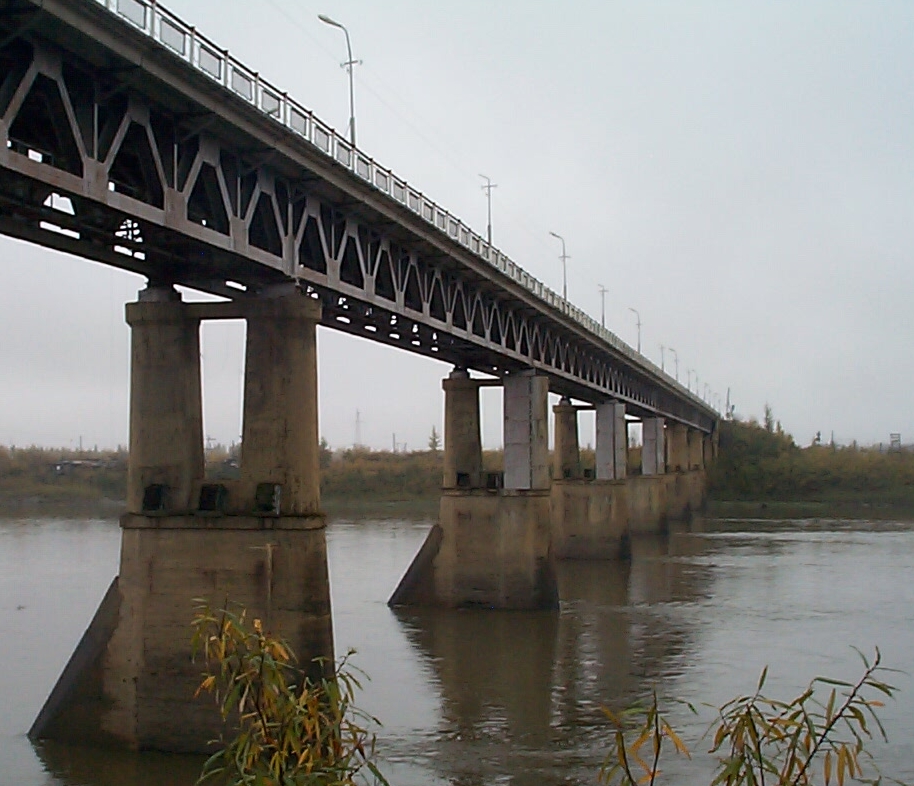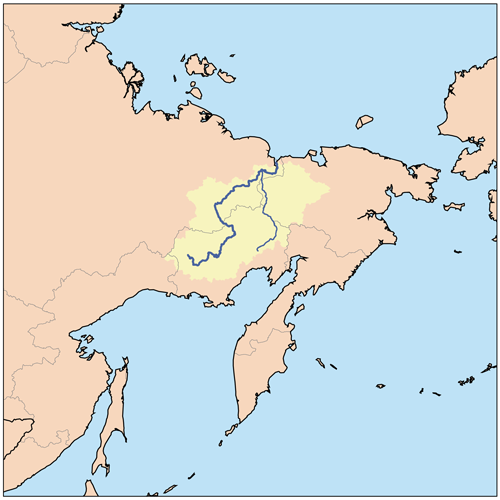|
Ust-Nera
Ust-Nera ( rus, Усть-Нера, r=; sah, Уус Ньара, translit=Uus Nyara) is an urban locality (an urban-type settlement) and the administrative center of Oymyakonsky District in Yakutia, Russia. Located in one of the coldest permanently inhabited regions on Earth, Ust-Nera is approximately northeast of the republic's capital, Yakutsk. As of the 2010 Census, its population was 6,463. Geography Ust-Nera is located at the confluence of the Nera and Indigirka Rivers, from which it takes its name (the ''ust-'' part means ''river mouth'' in Russian). Ust-Nera is located about north of the '' selo'' of Oymyakon, which one of two places in the Sakha Republic (the other being Verkhoyansk) which lays claim to being the northern Pole of Cold, the coldest location in the northern hemisphere. The Tas-Kystabyt, Silyap Range and the Nera Plateau are located in the district. Climate Ust-Nera has an extremely cold subarctic climate (Köppen climate classification ''Dwd)'' with ... [...More Info...] [...Related Items...] OR: [Wikipedia] [Google] [Baidu] |
Silyap Range
The Silyap Range ( rus, Силяпский хребет; sah, Силэп) is a mountain range in the Sakha Republic (Yakutia), Far Eastern Federal District, Russia. The nearest city is Ust-Nera. Geography The Silyap Range rises in the central area of the Chersky Range, to the west of the upper course of the Indigirka. Although the range is one of the smallest of the system, it has some of the most massive mountains of the range. The Silyap Range stretches in a roughly west–east direction for about . The highest peak is high Mount Chyon (Гора Чён), also known as "Gora Chen", an ultra-prominent peak. The larger Borong Range, another subrange of the Chersky Mountains, rises to the northwest, and the Porozhny Range to the north. The northern end of the Tas-Kystabyt rises roughly 70 km to the south of the range.Google Earth See also *List of mountains and hills of Russia *List of ultras of Northeast Asia This is a list of all the ultra prominent peaks (with topographi ... [...More Info...] [...Related Items...] OR: [Wikipedia] [Google] [Baidu] |
Oymyakonsky District
Oymyakonsky District (russian: Оймяко́нский улу́с; sah, Өймөкөөн улууһа, ''Öymököön uluuha'', ) is an administrativeConstitution of the Sakha Republic and municipalLaw #172-Z #351-III district (raion, or ''ulus''), one of the thirty-four in the Sakha Republic, Russia. It is located in the east of the republic and borders with Ust-Maysky District in the southwest, Tomponsky District in the west, Momsky District in the north, Susumansky District of Magadan Oblast in the east, and with Okhotsky District of Khabarovsk Krai in the south. The area of the district is .Registry of the Administrative-Territorial Divisions of the Sakha Republic Its administrative center is the urban locality (a settlement) of Ust-Nera. Population: 14,670 ( 2002 Census); The population of Ust-Nera accounts for 63.9% of the district's total population. Geography The landscape of the district is mostly mountainous. The Nera Plateau is located in the eastern part of the di ... [...More Info...] [...Related Items...] OR: [Wikipedia] [Google] [Baidu] |
Nera River (Russia)
The Nera (russian: Нера, sah, Ньара) is a river in the Sakha Republic, Russia, and is a right tributary of the Indigirka. The river is long and has a drainage basin of . The Nera freezes up in October and remains icebound until May - early June.' // Great Soviet Encyclopedia, in 30 vols. / Ch. ed. A.M. Prokhorov. - 3rd ed. - M .: Soviet Encyclopedia, 1969 A stretch of the R504 Kolyma Highway runs along the river. Google Earth Course The Nera is formed by the confluence of the rivers Delyankir and Khudzhakh in the Nera Plateau, near the border of Yakutia and Magadan Oblast. It flows roughly northeastwards and reaches its mouth at the Indigirka near the gold mining town of Ust-Nera on the Kolyma Highway. See also *List of rivers of Russia Russia can be divided into a European and an Asian part. The dividing line is generally considered to be the Ural Mountains. The European part is drained into the Arctic Ocean, Baltic Sea, Black Sea, and Caspian Sea. T ... [...More Info...] [...Related Items...] OR: [Wikipedia] [Google] [Baidu] |
R504 Kolyma Highway
The R504 Kolyma Highway (russian: Федеральная автомобильная дорога «Колыма», ''Federal'naya Avtomobil'naya Doroga «Kolyma»,'' "Federal Automobile Highway 'Kolyma'"), part of the M56 route, is a road through the Russian Far East. It connects Magadan with the town of Nizhny Bestyakh, located on the eastern bank of Lena River, opposite of Yakutsk. At Nizhny Bestyakh the Kolyma Highway connects to the Lena Highway. The Kolyma Highway is colloquially known as the Road of Bones (Russian: Дорога Костей, transliteration: ''Doróga Kostyéy''), in reference to the hundreds of thousands of forced laborers who were interred in the pavement after dying during its construction. Locally, the road is known as the Kolyma Route (Russian: Колымская трасса, transliteration: ''Kolýmskaya trássa''). History The Dalstroy construction directorate built the Kolyma Highway during the Soviet Union's Stalinist era. Inmates of the ... [...More Info...] [...Related Items...] OR: [Wikipedia] [Google] [Baidu] |
Indigirka River
The Indigirka ( rus, Индиги́рка, r=; sah, Индигиир, translit=Indigiir) is a river in the Sakha Republic in Russia between the Yana to the west and the Kolyma to the east. It is long. The area of its basin is . History The isolated village of Russkoye Ustye, located on the delta of the Indigirka, is known for the unique traditional culture of the Russian settlers whose ancestors came there several centuries ago. Some historians have speculated that Russkoye Ustye was settled by Pomors in the early 17th century. In 1638 explorer Ivan Rebrov reached the Indigirka. In 1636–42 Elisei Buza pioneered the overland route to the Indigirka river system. At about the same time, Poznik Ivanov ascended a tributary of the lower Lena, crossed the Verkhoyansk Range to the upper Yana, and then crossed the Chersky Range to the Indigirka. In 1642 Mikhail Stadukhin reached the Indigirka overland from the Lena. Zashiversk on the Indigirka was an important colonial outpost durin ... [...More Info...] [...Related Items...] OR: [Wikipedia] [Google] [Baidu] |
Tas-Kystabyt
The Tas-Kystabyt ( rus, Тас-Кыстабыт, sah, Таас Кыстаабыт) is a mountain range in the Sakha Republic and Magadan Oblast, Far Eastern Federal District, Russia. It is also known as "хребе́т Са́рычева" —Sarychev Range, in honor of 19th century Russian cartographer Admiral Gavril Sarychev.Тас-Кыстабыт — in 30 vols. / Ch. ed. A.M. Prokhorov - 3rd ed. - M, 1969–1978 Geography The Tas-Kystabyt rises in the southeasternmost sector of the |
Nera Plateau
The Nera Plateau ( rus, Нерское плоскогорье, sah, Ньара хаптал хайалаах сирэ) is a mountain plateau in the southeastern Sakha Republic ( Oymyakon District) and the northwestern end of Magadan Oblast ( Susumansky District), Far Eastern Federal District, Russia. The Ust-Nera - Magadan tract of the R504 Kolyma Highway crosses the plateau from northwest to southeast. Google Earth There are gold placers in certain spots of the Nera Plateau. Geography The Nera Plateau is at the source area of the Nera River, a tributary of the Indigirka. Other rivers on it are the Ayan-Yuryakh, one of the rivers that form the Kolyma, and the Byoryolyokh, an Ayan Yuryakh tributary. The plateau is limited by ranges of the Chersky mountain system to the northeast, the Upper Kolyma Highlands to the southeast and the Tas-Kystabyt (Sarychev Range) to the southwest. [...More Info...] [...Related Items...] OR: [Wikipedia] [Google] [Baidu] |
Gulag
The Gulag, an acronym for , , "chief administration of the camps". The original name given to the system of camps controlled by the GPU was the Main Administration of Corrective Labor Camps (, )., name=, group= was the government agency in charge of the Soviet network of forced labour camps which were set up by order of Vladimir Lenin, reaching its peak during Joseph Stalin's rule from the 1930s to the early 1950s. English-language speakers also use the word ''gulag'' in reference to each of the forced-labor camps that existed in the Soviet Union, including the camps that existed in the post-Lenin era. The Gulag is recognized as a major instrument of political repression in the Soviet Union. The camps housed a wide range of convicts, from petty criminals to political prisoners, a large number of whom were convicted by simplified procedures, such as NKVD troikas or other instruments of extrajudicial punishment. In 1918–22, the agency was administered by the Cheka, follow ... [...More Info...] [...Related Items...] OR: [Wikipedia] [Google] [Baidu] |
Soviet Union
The Soviet Union,. officially the Union of Soviet Socialist Republics. (USSR),. was a transcontinental country that spanned much of Eurasia from 1922 to 1991. A flagship communist state, it was nominally a federal union of fifteen national republics; in practice, both its government and its economy were highly centralized until its final years. It was a one-party state governed by the Communist Party of the Soviet Union, with the city of Moscow serving as its capital as well as that of its largest and most populous republic: the Russian SFSR. Other major cities included Leningrad (Russian SFSR), Kiev (Ukrainian SSR), Minsk ( Byelorussian SSR), Tashkent (Uzbek SSR), Alma-Ata (Kazakh SSR), and Novosibirsk (Russian SFSR). It was the largest country in the world, covering over and spanning eleven time zones. The country's roots lay in the October Revolution of 1917, when the Bolsheviks, under the leadership of Vladimir Lenin, overthrew the Russian Provisional Government ... [...More Info...] [...Related Items...] OR: [Wikipedia] [Google] [Baidu] |
Kolyma
Kolyma (russian: Колыма́, ) is a region located in the Russian Far East. It is bounded to the north by the East Siberian Sea and the Arctic Ocean, and by the Sea of Okhotsk to the south. The region gets its name from the Kolyma River and mountain system, parts of which were not accurately mapped by Russian surveyors until 1926. Today the region consists roughly of the Chukotka Autonomous Okrug and the Magadan Oblast. The area, part of which is within the Arctic Circle, has a subarctic climate with very cold winters lasting up to six months of the year. Permafrost and tundra cover a large part of the region. Average winter temperatures range from (even lower in the interior), and average summer temperatures, from . There are rich reserves of gold, silver, tin, tungsten, mercury, copper, antimony, coal, oil, and peat. Twenty-nine zones of possible oil and gas accumulation have been identified in the Sea of Okhotsk shelf. Total reserves are estimated at 3.5 billion tons ... [...More Info...] [...Related Items...] OR: [Wikipedia] [Google] [Baidu] |
Verkhoyansk
Verkhoyansk ( rus, Верхоянск, p=vʲɪrxɐˈjansk; sah, Верхоянскай, ''Verkhoyanskay'') is a town in Verkhoyansky District of the Sakha Republic, Russia, located on the Yana River in the Arctic Circle, from Batagay, the administrative center of the district, and north of Yakutsk, the capital of the Sakha republic. As of the 2010 Census, its population was 1,311. Verkhoyansk holds the record for the hottest temperature ever recorded north of the Arctic Circle, with , and it also holds the record for the coldest temperature ever recorded in Asia, . The cold record is shared with Oymyakon. History Cossacks founded an ostrog in 1638, southwest of the modern town. The ostrog's name "Verkhoyansky", roughly translating from Russian as ''the town on the Upper Yana'', derived from its geographical location on the upper reaches of the Yana River. In 1775, it was moved to the left bank of the Yana River to facilitate tax collection. It was granted town status ... [...More Info...] [...Related Items...] OR: [Wikipedia] [Google] [Baidu] |

.png)

